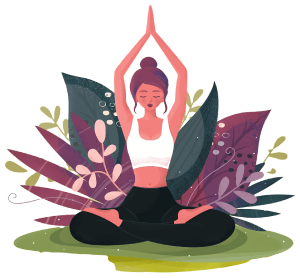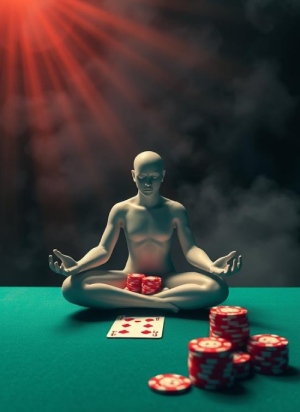The quietest seat in a card room is inside your head. Chips click, chairs scrape, voices rise and fade, yet the real contest often turns on a breath you control and a thought you let pass.
This piece treats poker as a training ground for attention and composure. Not as a metaphor, but as a practice with routines, constraints, and measurable outcomes. The question is modest but concrete. If meditation cultivates steady attention and balanced affect, can the structure of poker sessions, hand by hand, nudge the mind in a similar direction, at least some of the time?
Opening Thought
Consider a common spot. You defend the big blind, miss the flop, face a small continuation bet. The choice feels weak and fluctuations have been experienced throughout the session.What happens next is rarely about card rankings alone. It hinges on whether your attention stays with the actual inputs or slides toward the last bad beat.
What Meditation Really Means

Meditation, in its most workable form, is disciplined attention to a chosen anchor, often the breath, coupled with nonreactive awareness of thoughts and sensations. The aim is not bliss. It is noticing, then returning, with less friction and more regularity. Over time, that simple loop can change how stimuli trigger behavior.
How Meditation Calms the Mind
The mechanism is not mysterious. Slow nasal breathing reduces physiological arousal, which softens impulsive responses. Labelling an emotion quietly in your head reduces its intensity. Brief body scans track muscle tension that would otherwise be ignored. None of this guarantees serenity, yet these practices tend to widen the gap between cue and action.
What Poker Demands Mentally

Poker rewards high quality attention under uncertainty. You budget working memory across positions, stack sizes, ranges, and timing. You update beliefs after each street. You tolerate incomplete information and mild adversity without burning through cognitive resources. When you tilt, the system that evaluates probabilities is replaced by a grievance machine.
Why Poker Players Use Meditation
Players who last tend to adopt short, repeatable routines. Two minutes of square breathing in the restroom between levels. Ten slow breaths before opening the client. A brief note to self after a tough fold. These are not grand rituals. They are small constraints that keep the next hand from inheriting the emotions of the last one.
Mindfulness Helps Focus on The Table
Attention in poker is specific. You watch bet sizing drift on wet boards, note a micro-pause before a river check, or catch your own urge to “win it back.” Mindfulness, when practiced, makes those micro-events easier to perceive without immediate interpretation. You see a hesitation, label it as data, and let the hand’s logic lead rather than your mood.
Emotional Control in Poker
Tilt is not anger alone. It is a narrowing of perspective that treats recent variance as destiny. A simple protocol helps. Name the state, breathe for thirty seconds, set a hard rule for the next hand selection, then reassess after one orbit. This sequence does not promise perfect play, yet it usually prevents the steepest slide.
Brain Changes from Meditation
Attention training may strengthen networks involved in monitoring and control, which aligns with the demands of multi-street reasoning. Practitioners often report improved error recognition and quicker recovery from distraction. While claims should be cautious, the overlap with poker’s mental tasks is plausible and practically useful.
Similarities Between Meditation and Poker Flow
Both spaces reward stable focus with low internal chatter. In a good session you track ranges, bet sizes, and textures with surprising ease. The feeling is quiet rather than euphoric. Thoughts arise, many are discarded, and action follows a clear line from premise to bet. Meditation practice rehearses that quiet.
Contrasts and Limits
Important differences remain. Poker involves monetary risk and competitive pressure. Meditation does not. Poker demands outward analysis and exploit construction, while meditation turns attention inward. Treating poker as a complete substitute for meditation stretches the claim too far. It is more accurate to say that certain poker habits resemble attentional training and benefit from it.
Practical Tips for Players
Before play, take three minutes with a timer and breathe in a four-four-six pattern. During play, mark a quick note after any hand that spikes emotion, then stand for sixty seconds. Between sessions, run a five-minute body scan while reviewing two or three hands, asking what you actually knew at the time. Keep a fatigue rule, such as quitting after two consecutive B-game or worse notes in your log.
Closing Reflection
Viewed this way, poker may serve as an applied mindfulness lab. The cards supply uncertainty, the bankroll supplies consequence, and your routines supply structure. Hand by hand, you practice returning attention to what matters. No matter if a physical table is occupied or a digital one is joined, the calm technique that stabilizes everything is being relied upon for consistency.
